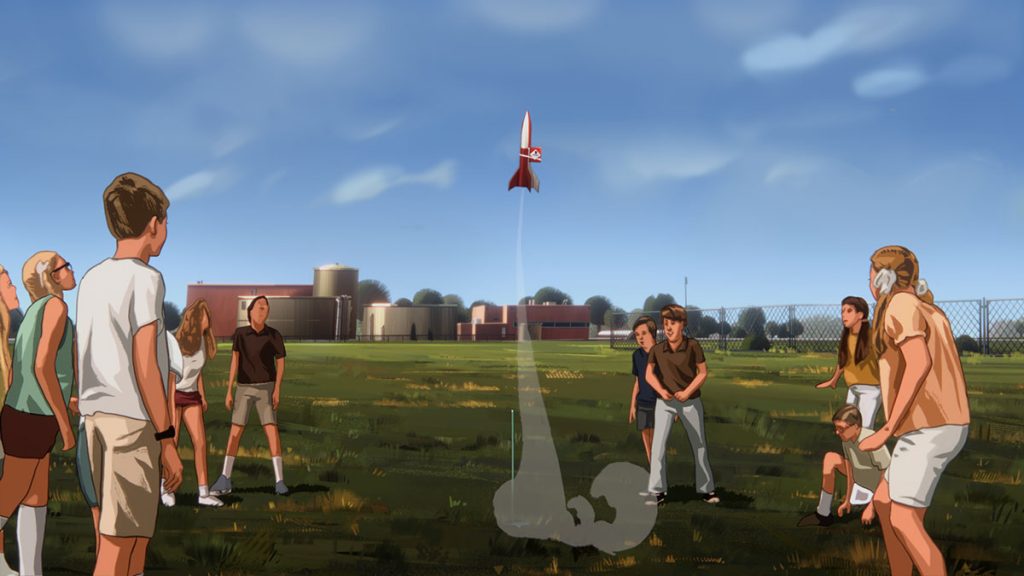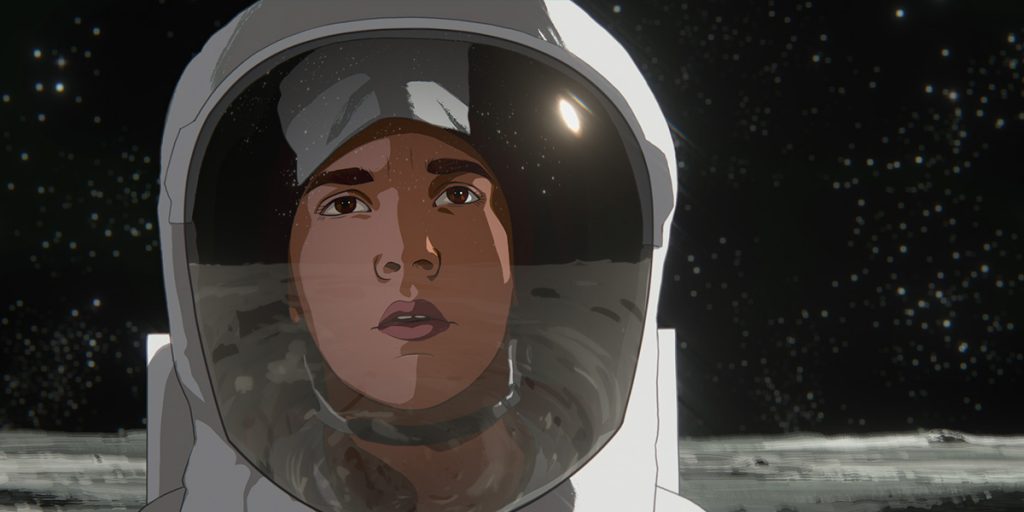Apollo 10 1/2: A Space Age Childhood sees Richard Linklater indulge in nostalgia and childhood fantasy, creating a warmth to which anyone of any age can connect.
On top of being able to attend a big festival premiere like this in the first place, there was something really special about seeing a film that so encapsulates Texas history and older culture while taking part in a historic, cultural event in Texas itself. In this case, the history on display in Richard Linklater’s newest film, Apollo 10 1/2: A Space Age Childhood, surrounds the famous Apollo 11 moon landing of 1969. We go a bit further back than that, however, to see roughly a year leading up to the event from the perspective of our main character, Stan (Milo Coy as a child, Jack Black as the narrating adult). We’re told and shown what life was like for Stan growing up in Texas with his family, the differences in childhood life and parenting between back then and now, and the nationwide anticipation of the moon landing. Everything is described as is accurate to history, except for one key difference: Stan also tells a tale of how, before Apollo 11, he was given a mission to the moon as a test run of sorts, referred to as Apollo 10 1/2.
Clearly, that last part is a work of pure fiction. But it comes from a very real place, that being the fantasizing that Linklater did when he was growing up through the execution of Apollo 11. The sentiment that surely comes from such childhood dreaming oozes all over this aspect of Apollo 10 1/2, mainly because of how the rest of the film engulfs itself in what feels like a very real, very fondly remembered childhood in 1960s Texas. This animated feature covers a lot of different ground in regards to how children like Stan went through their days and witnessed the world around them. There are purely sweet moments like attending The Sound of Music multiple times with his grandmother, more bizarre moments like Stan’s female relatives using cans as hair curlers to save money, simple, relatable moments like Stan falling asleep in a car and waking up in bed, the weight of history being made right in front of him, and several parenting mishaps and rougher childish mishaps that I suppose reflect the much … looser parenting styles of back then, to put it very nicely.
The funny thing about those in particular is how they’re told in the same relaxed, matter-of-fact tone that Stan’s narration maintains throughout the entire film, courtesy of an unrecognizable Jack Black (seriously, I would never have been able to tell that it’s him). He clearly recognizes how recklessly he lived chunks of his earlier life, but he still looks back with a calm fondness, probably because he assumedly got through it all fine.

The same can be said when he’s talking about all the horrors and scares that were going on at the time like the Vietnam War, the Cold War, and scares over population excess and the environment. In our current climate where there’s so much madness all around us in so many forms, it’s easy to forget that nearly every point of our country’s history has at least something traumatic going on that can make citizens fear that the end is near, and it’s fascinating to compare the fears of decades prior to now and wonder if we’ll look back on the present day in a similar fashion. It’s also fun to hear all the technological and social innovations Stan and his friends and family imagined the future bringing and how they did or didn’t pan out, and again wonder how accurate our own speculations will be one day.
You feel so invited to make these comparisons because of the sense of authenticity to this setting that’s present in every frame. In fact, every so often, family members switch TV channels from the Apollo 11 coverage, and Linklater and his crew told us that they researched to find out what was actually playing at the corresponding moment and had that be what plays on TV in the film. That kind of dedication goes a long way in immersing us in the slice-of-life nature of Apollo 10 1/2. Stan himself may not be the most distinguished character as a kid, but much like the earlier scenes in Linklater’s Boyhood, portraying the memories of childhood in this fashion benefits a lot from focusing more on experiences and sensory details, because those are what are most developed in our minds when we’re children rather than our own psychologies (at least, that’s how I experienced my own early childhood).
On the other side of this story is the fantasized tale of Stan going to space. The way he claims to have gotten involved with Apollo 10 1/2 in the first place is very funny, clearly coming from the imagination of a child and loveably juxtaposing impossible logic with how seriously the characters, including the NASA team, all take it. Stan’s “memories” of this journey and each step he takes on it are also arranged to sync up with the respective steps that the actual Apollo 11 team took, from blastoff to the moon walk, which beautifully puts us deeper into Stan’s shoes as him fantasizing being on that journey as he watches it unfold in his real world. We see Stan drifting off as the astronauts touch down on the moon, after all, so maybe that’s precisely when he dreamt of his own excursion. On a broader note, because he obviously fabricated certain events, he could very well be exaggerating or making up other details of his childhood based on how he remembers processing them at that age. That childlike framing that’s open to interpretations like this is a huge part of what’s so beautiful and charming about Apollo 10 1/2.
And speaking of beautiful, the animation, which uses rotoscoping technology like Linklater’s Waking Life and A Scanner Darkly, is very well-executed. Though it’s not as lively or exaggerated as something more “traditionally” hand-drawn would be, the sketchiness and vibrant color scheme bring a visual flair that feels both realistic and fantastical at the same time, fitting the framing of the narrative. I’m sure that animating the film in the first place also allowed for much more of the varied locations that zip by in this all-encompassing account, not to mention the actual space sequences. The animators even managed to make film and television footage look distinguished from the “real” world.
There’s always such a warm, fuzzy feeling whenever Linklater touches upon childhood in his work. That spark of wonder and childlike introspection is what makes Boyhood one of my favorite movies, and it elevates Apollo 10 1/2: A Space Age Childhood to a really funny and magical place. It’s a near-perfect dive into the memories and dreams of a boy in 1960s Texas, whether you want to see them as just Stan’s or Linklater’s as well. I loved this film as soon as it was done, and the more I sit here thinking about it, the better it gets. The only thing I can think of that could have been improved is the pacing. A lot of events go by really quickly, sometimes before we really get to let them sink in. The film could have easily been slower (and therefore longer) and I wouldn’t have minded. Or maybe dialing back the frequency of the narration, as endearing as it is, would have helped?
But I’m grasping at straws with this complaint. Apollo 10 1/2: A Space Age Childhood is an immensely charming film that made me somehow nostalgic for a time decades before I was even born, because despite the differences between the life portrayed and my own life, this film captures the wonder, whimsy, and even confusion that anyone born at any time can relate to from their youths.
Apollo 10 1/2: A Space Age Childhood premiered at SXSW 2022 on March 13, 2022, and was released globally on Netflix on April 1st, 2022.

